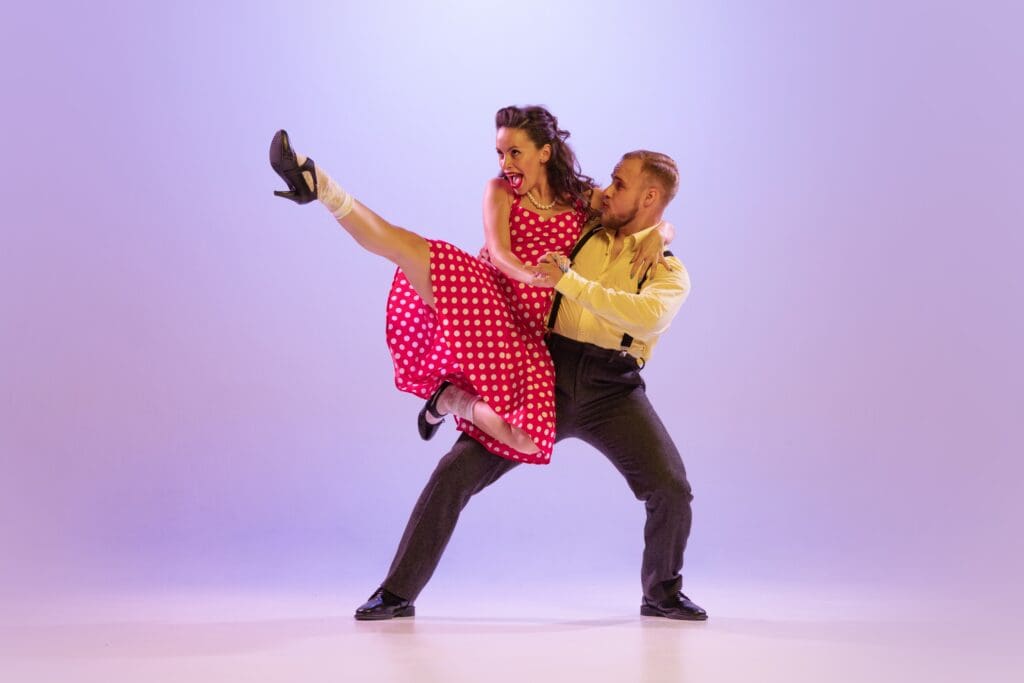East Coast Swing
East Coast Swing History
East Coast Swing, a lively and rhythmic dance form, has its roots in the Swing dance family and boasts a rich history:
Origin in the 1940s:
- East Coast Swing evolved from the Lindy Hop, a popular dance in the 1920s and 1930s.
- It originated in the United States during the 1940s.
Adaptation and Evolution:
- This dance was adapted for easier learning and more casual dancing.
- Dance studios began teaching it, simplifying the movements from its Lindy Hop origins.
Characteristics:
- East Coast Swing is characterized by its upbeat and bouncy rhythm.
- It’s known for its basic 6-count pattern and various turns and spins.
Post-War Popularity:
- After World War II, its popularity grew in American social dance circles.
- It was danced to the popular music of the era, including jazz and rock ‘n’ roll.
Modern Day:
- Today, East Coast Swing is a popular dance in both social and competitive scenes.
- It’s part of the American Rhythm category in dance competitions.
In summary, East Coast Swing, with its roots in the Lindy Hop, is a vibrant and accessible dance, evolving alongside American music and dance trends to become a staple of social and competitive dancing.
East Coast Swing Characteristics
East Coast Swing is a vibrant, upbeat dance known for its bouncy rhythm and playful style. It features a basic 6-count pattern with a variety of turns and spins, making it accessible and fun. This dance is characterized by its lively energy and is often performed to a wide range of music, from big band swing to contemporary songs.
East Coast Swing Music Information
East Coast Swing is danced to music with specific characteristics that complement its lively and rhythmic style:
Time Signature: The music typically has a 4/4 time signature, providing a regular and predictable rhythm suitable for the dance’s steps.
Tempo: The tempo can vary but is usually in the range of 136-144 beats per minute (bpm), making it ideal for the dance’s energetic and bouncy nature.
Rhythmic Feel: The music for East Coast Swing often has a strong and pronounced rhythm, emphasizing the “swing” feel. This swing rhythm gives the dance its characteristic bounce and groove.
Musical Styles: East Coast Swing can be danced to a variety of music styles, including traditional swing, rock ‘n’ roll, and contemporary pop, as long as the music has the right tempo and swing rhythm.
Instrumentation: Classic swing music often features a big band setup with brass, woodwinds, and rhythm sections, but modern adaptations can vary widely in instrumentation.
These musical elements provide the upbeat and joyful backdrop for East Coast Swing, making it a versatile and enjoyable dance for both social and competitive settings.
